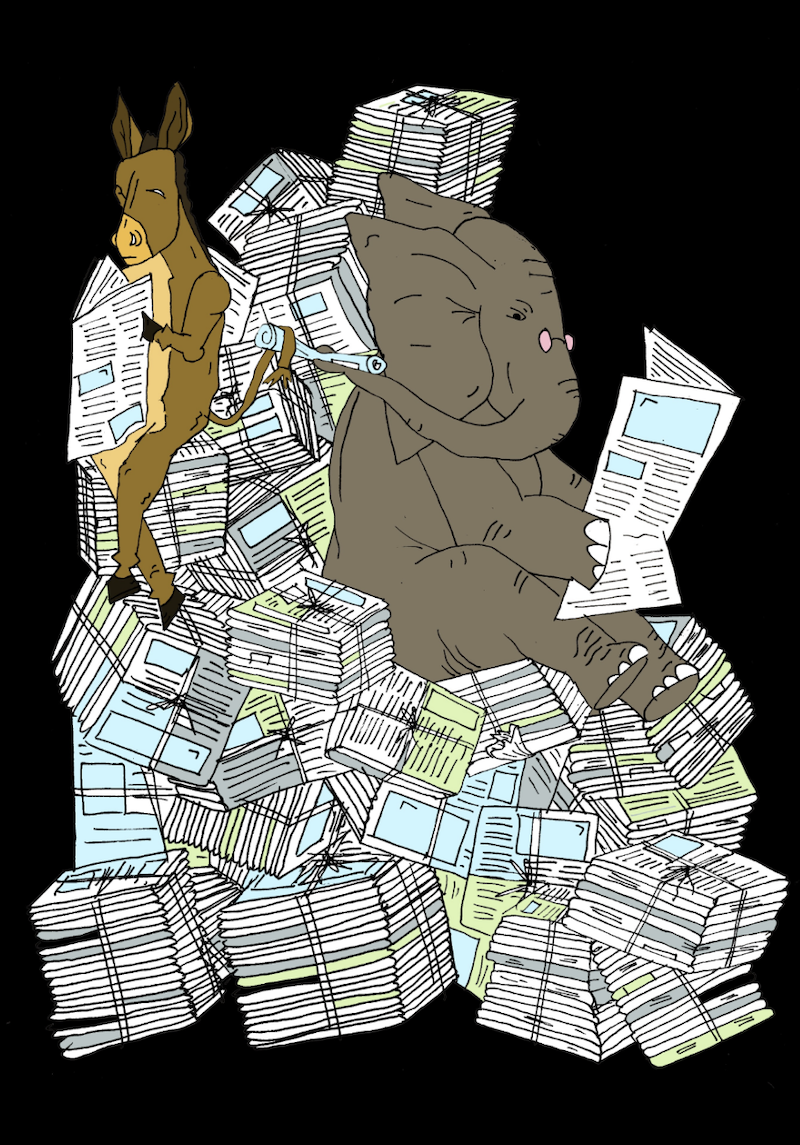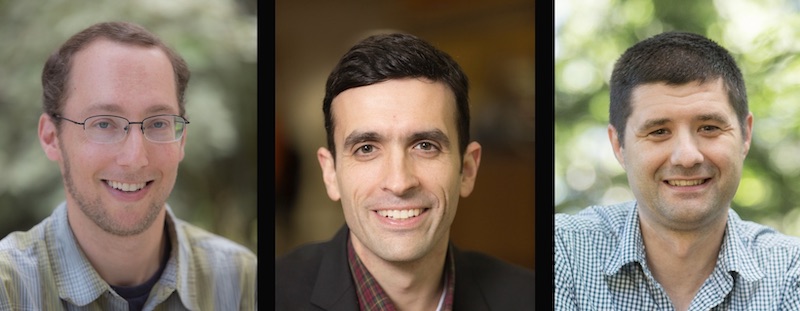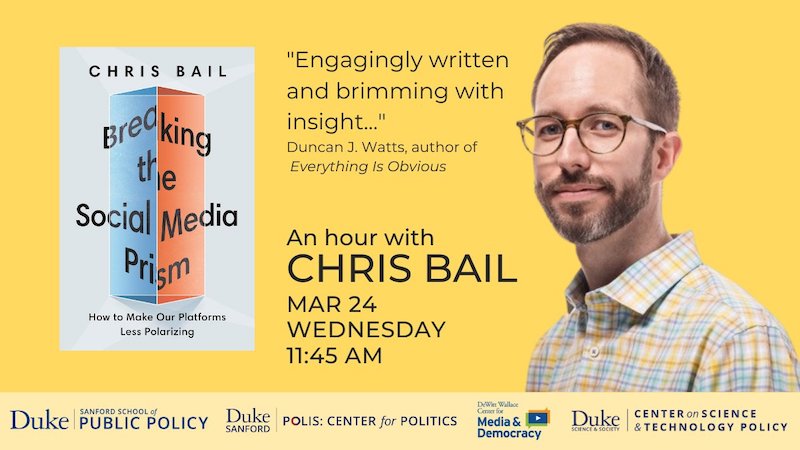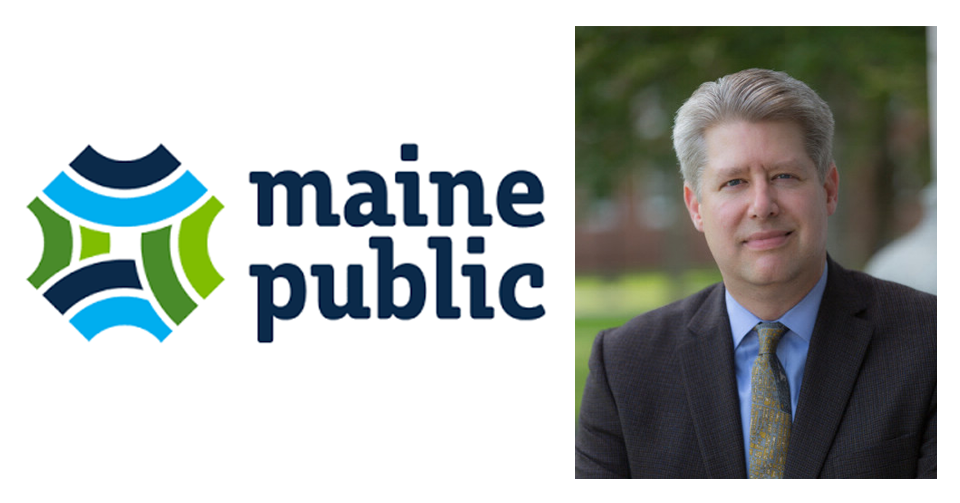Left- and Right-Leaning Students Trade Media Articles and Political Beliefs
By Rebecca Goldfine
The more left-leaning Bowdoin students and the more right-leaning Clemson students participated in Stone's online project, Media Trades, during the month of February.
Media Trades allows users to choose a newspaper or magazine article from over six-hundred media outlets and share it with another site user with a different political outlook. Both trading partners agree to read the swapped articles, and to prove they did so by writing a short summary.
So, for instance, a left-leaning user might trade an NPR story like this one: "Why Republicans Are Moving To Fix Elections That Weren't Broken." While a right-leaning user would send this one from the Manhattan Institute's City Journal: "Results, Not Headlines: Many heartland states have outperformed more prominent counterparts in the fight against Covid-19." (These were actually exchanged by students.)
While users might be motivated to trade articles to get a chance to prove they are right, in the end, they will also learn about the other side's reasons for believing what they do.
Stone first enlisted a university course to engage with Media Trades last semester, when he worked with an economics class taught by Shilpi Mukherjee. This semester, Mukherjee asked another of her classes to participate. Along with the Bowdoin class, a total of 123 students participated, trading more than 300 articles.
Of the ninety-five students from Clemson, sixty-nine self-identified as leaning right, and twenty-six said they leaned left. Of the thirty-two students from Bowdoin, five said they tended to have right-leaning views, while the rest reported being left-leaning. A few non-students also joined in to ensure that an equal number of liberal and conservative articles were traded.

The Bowdoin participants are taking Professor of Government Michael Franz's Quantitative Analysis in Political Science course this semester. While Franz does not teach media politics in this class, he said he signed his class up for Media Trades experiment because he is teaching research design and data collection in the social sciences.
"Social science is messy, and studying the attitudes and behaviors of individuals is a challenge," he said. "I thought students could see this in practice by becoming participants in a social science project."
Franz added that students seemed to enjoy the experience, and "saw firsthand what it’s like to study—and collect data about—something as complicated as polarization and media politics."
Indeed, based on post-experiment surveys, Clemson students, in both semesters, enjoyed making the trades more than they expected. At the same time, "Bowdoin students expected to enjoy them and did," according to Stone.
In feedback submitted anonymously by participants, one reported: "This was an awesome experience to connect with other people about things that go on in our country." Another wrote: "I appreciate the opportunity to work with people 'across the aisle.'"
A few, however, remained somewhat skeptical. One stated the suspicion "I enjoyed reading the articles but felt that the person in my first trade didn't even try to understand the argument made in the article I posted."
And another was pessimistic about ever dismantling the wall between Republicans and Democrats. "Unfortunately, given the sheer number of people in this country who won't even listen to what other people, let alone news sources, have to say, it seems unlikely that something like this would take off barring a monumental shift in bipartisan relations."
But while polarization is a monumental challenge, some students did seem to have their minds changed—even just incrementally.
A majority of Clemson students—both left-and right-leaning—said they learned “a moderate amount” or “a great deal” about a policy issues. Bowdoin students were somewhat less likely to say this.
"A key outcome was that large majorities from both ends of the political spectrum, and from both schools, said they were 'maybe' or 'probably' more likely to get more diverse news going forward," Stone said. Almost 70 percent of Bowdoin students and nearly 80 percent of Clemson students said there is a good chance they'd diversify their news consumption.

Chris Bail ’02 is a professor of sociology, public policy, and data science at Duke University, where he directs the polarization lab. He has just published a book with Princeton University Press, Breaking the Social Media Prism: How to Make Our Platforms Less Polarizing, which offers hope that we might yet overcome political tribalism on social media.
And the experience might have also altered some students' conceptions about those on the "other side." While "most students [including Bowdoin students] said the trades had no effect on their feelings, five Clemson students on each side [both liberal and conservative] said they felt warmer toward the other side. And only one or two said the trades made them feel colder toward the other side," Stone reported.
The shift in attitude for these ten students could be due to what's known as "the contact hypothesis," Stone said, which proposes that hostility and misconceptions decrease the more people in different groups—ethnic, religious, political, or otherwise—interact with one another.
"The contact hypothesis is still debated, but there are a lot of examples from different contexts that suggest we like people better when they’re not abstract entities," Stone added.
"And while these media trades are not very personal, or they're not ideal in facilitating contact, there is still some contact," he said. "I think the trade experience is a little bit of a bonding one; you see that someone made the effort to pick out an article for you."
Based on the success of the Bowdoin-Clemson Media Trades partnership, Stone said he's hoping to run similar projects going forward.



